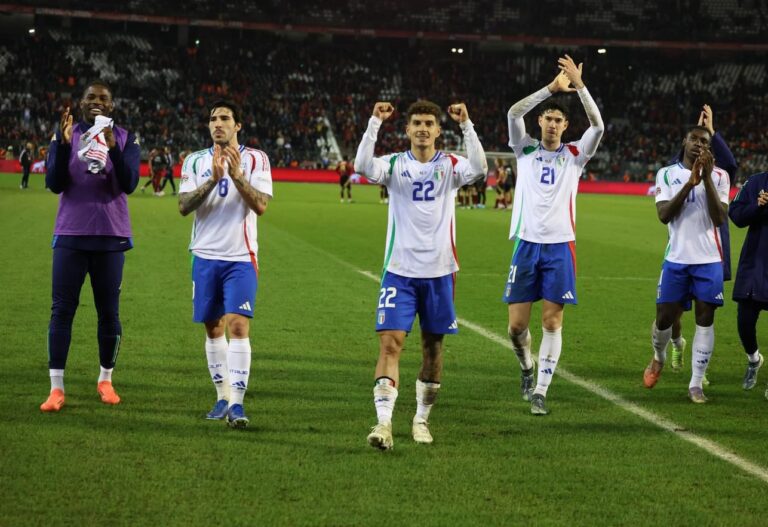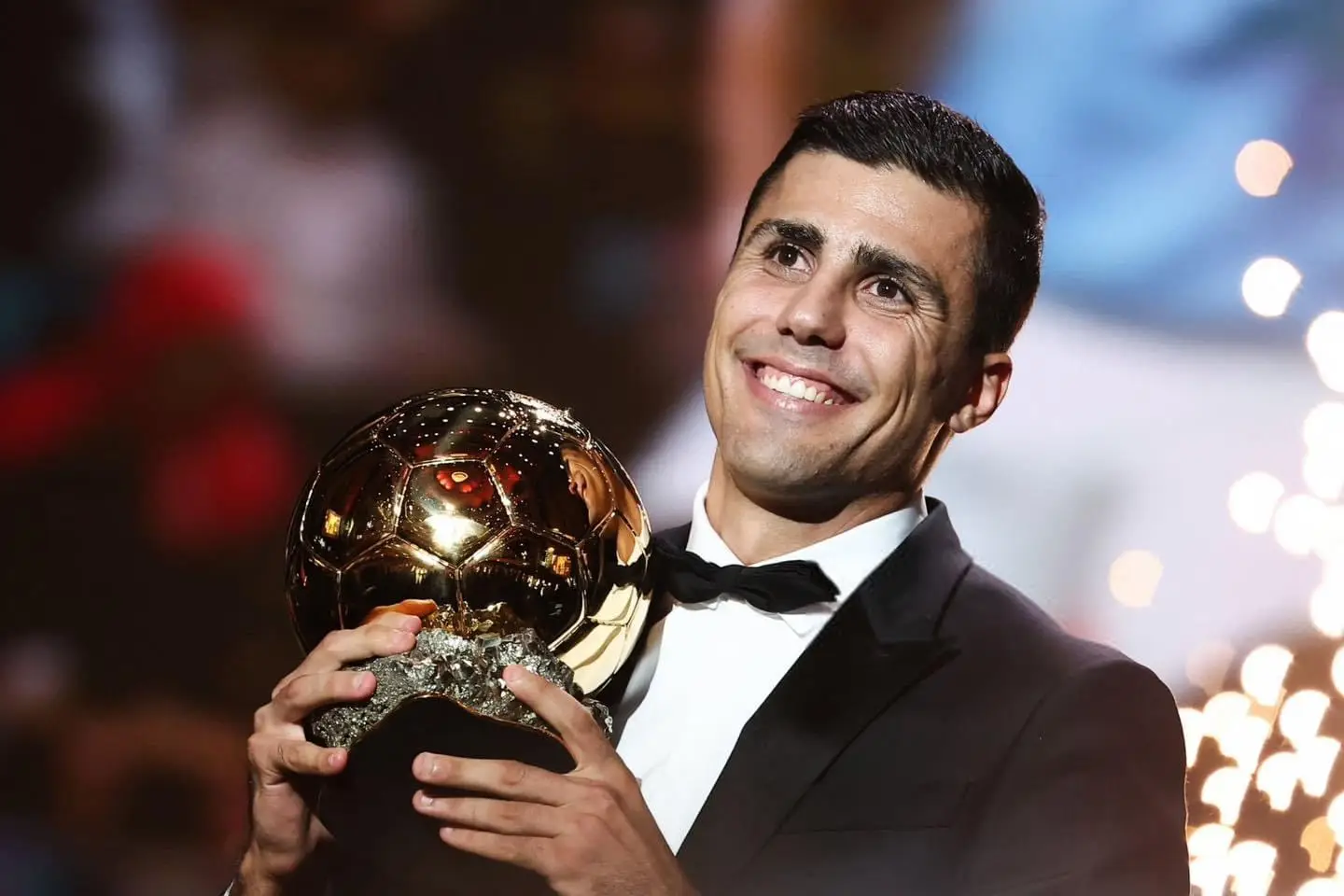“Brazil vs. Uruguay 1:1: In-Depth Analysis of the Match, Key Players, and the Impact on World Cup Qualifiers”…
Match Preview: Brazil vs. Uruguay
Brazil vs. Uruguay 1:1: In-Depth Analysis of the Match, Key Players, and the Impact on World Cup Qualifiers
Match Preview: The Intensity of Brazil vs. Uruguay
The Brazil vs. Uruguay fixture is always a special event in international football, filled with history, rivalry, and immense skill. As two of South America’s most celebrated teams, Brazil and Uruguay bring a unique style of play that captures global attention. Brazil, known for its flair, creativity, and technical excellence, came into the match with a strong desire to secure a crucial victory on home turf. Uruguay, a team renowned for its resilience, tactical discipline, and relentless spirit, was equally motivated to challenge their Brazilian counterparts. This clash was not just about points; it was a battle for pride, history, and a stronger position in the World Cup qualifying rounds.

Brazil aimed to leverage its attacking strength, with Rahinha and Vinícius Jr. at the heart of their offensive strategies. Uruguay, meanwhile, entered the game with a solid defense and a talented young squad featuring players like Darwin Núñez and Federico Valverde. The mix of experience and youth on both sides set the stage for an intense and closely contested match.
First Half: Brazil’s Control and Uruguay’s Resilience
In the opening half, Brazil set the tone by dominating possession and showcasing their classic South American style of quick, skillful passes. Neymar was pivotal in orchestrating Brazil’s attacks, often dropping back to link up with the midfield and create space for his teammates. Rodrygo and Vinícius Jr. were also active on the wings, trying to exploit Uruguay’s flanks. However, despite Brazil’s control of the game, they faced a disciplined Uruguayan defense led by Diego Godín and José María Giménez. Uruguay’s well-organized defense frustrated Brazil’s attempts to penetrate, forcing Brazil into long shots and high crosses.

Uruguay, while on the defensive for much of the half, did not sit back entirely. They were quick to counter-attack whenever they regained possession, using Valverde’s tactical intelligence to initiate swift transitions. Valverde’s ability to cover ground, combined with his accurate passes, allowed Uruguay to make the most of their counter-attacking opportunities. Pellistri and Núñez posed threats on the flanks, forcing Brazil’s fullbacks to retreat and focus on defense.
Second Half: High Stakes and Tactical Adjustments
As the second half began, the intensity on the field increased, with both teams determined to find a breakthrough. Brazil continued to apply pressure, with coach Fernando Diniz making key tactical adjustments to maximize their offensive potential. The introduction of Richarlison brought a fresh element to Brazil’s attack, providing physicality and an aerial threat in the box. Brazil’s play became more direct, focusing on quick balls into the penalty area to bypass Uruguay’s defensive setup. Despite Brazil’s best efforts, Uruguay’s goalkeeper, Sergio Rochet, delivered a standout performance, making crucial saves that denied Brazil multiple scoring chances.
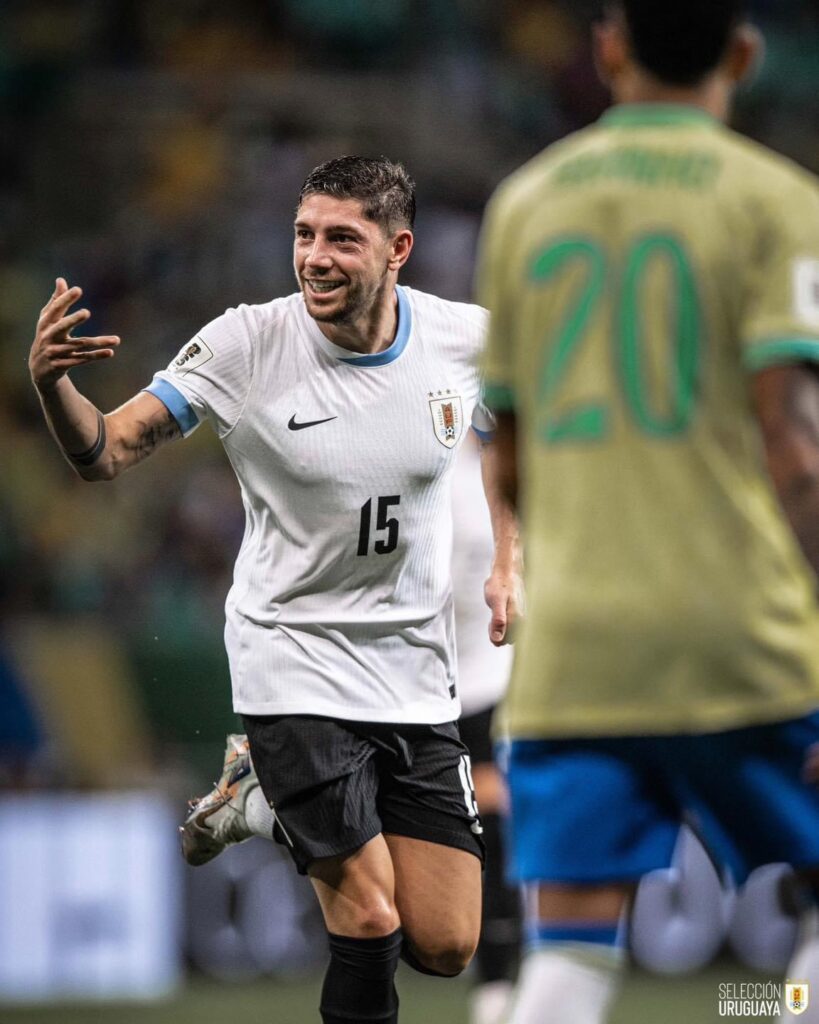
Uruguay, on the other hand, maintained their composure and patience, sticking to their game plan of counter-attacks and selective pressing. In the 55th minute, Uruguay’s persistence paid off when Darwin Núñez capitalized on a defensive lapse by Brazil. His powerful, well-placed strike leveled the score, igniting a new wave of energy in the match. Brazil, now pressured to regain control, responded with increased urgency, as Neymar and Vinícius Jr. worked tirelessly to break down Uruguay’s defense. Despite a series of close calls, Uruguay’s backline held strong, securing a hard-fought draw.
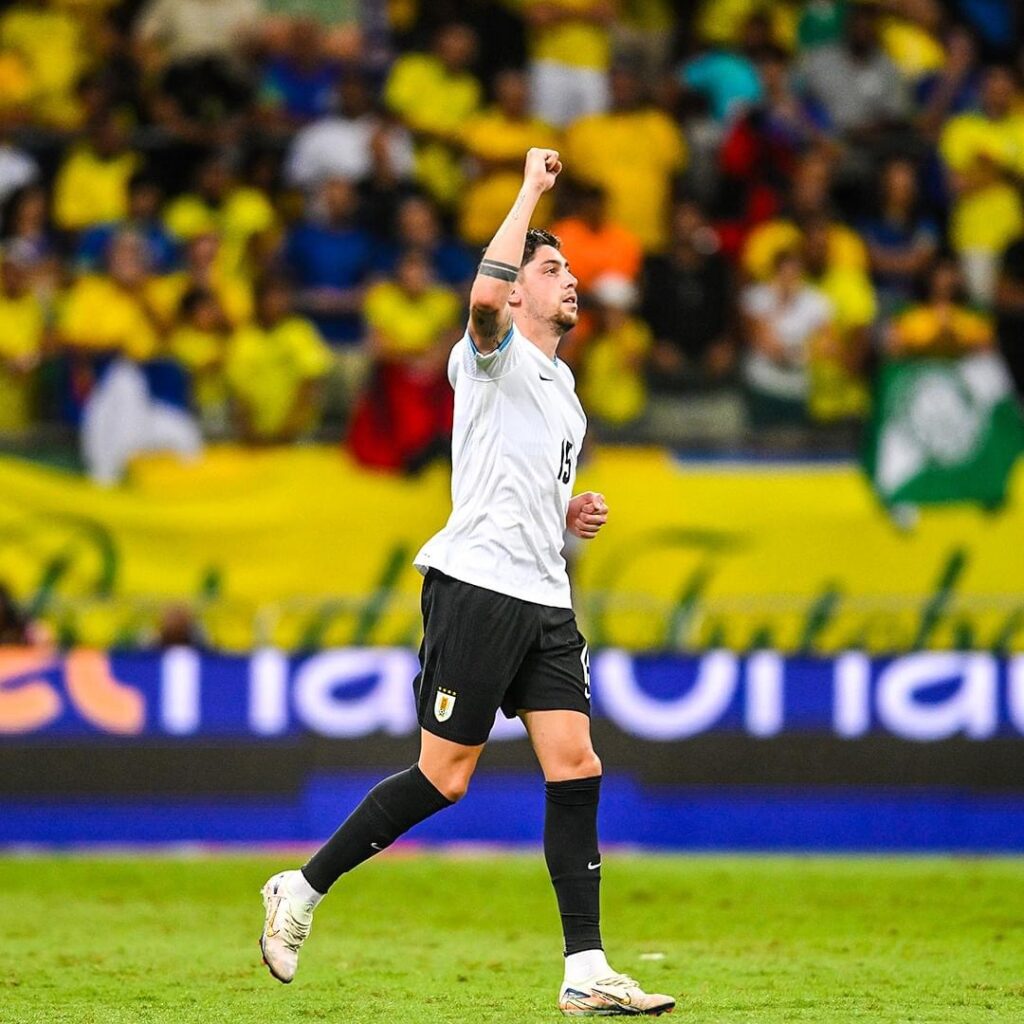
Tactical Insights: A Clash of Styles
Brazil’s Attack-Oriented Setup: Brazil’s strategy was to dominate the midfield, control the pace, and use the wings to dismantle Uruguay’s defense. Neymar played a free role, often dropping deep to pick up the ball and dictate the game’s tempo. This allowed Rodrygo and Vinícius Jr. to exploit space on the wings and pose constant threats. However, Uruguay’s compact and disciplined defense forced Brazil to rely on crosses and long shots, limiting their usual fluid, through-ball approach.
Uruguay’s Defensive Solidity and Counterattacking Threat:
Uruguay deployed a 4-4-2 formation with a low defensive block, enabling them to absorb Brazil’s pressure without compromising their structure. Valverde and Ugarte were instrumental in cutting off Brazil’s passing lanes and initiating counterattacks. Uruguay’s strategic pressing was selective, allowing them to regain possession at opportune moments and launch quick transitions, catching Brazil off guard.

Key Player Performances
- Neymar (Brazil): Neymar’s creativity and technical skills were essential to Brazil’s attack. He moved freely around the field, connecting the midfield with the forwards and opening up spaces for his teammates. However, Neymar struggled to find clear opportunities due to Uruguay’s tight marking, which limited his impact in the final third.
- Federico Valverde (Uruguay): Valverde’s performance in midfield was a masterclass in discipline and efficiency. His ability to balance defensive duties with offensive contributions allowed Uruguay to maintain control and stay competitive. Valverde’s intelligent positioning and precise passing were key to Uruguay’s counter-attacking success.
- Sergio Rochet (Uruguay): Uruguay’s goalkeeper was the unsung hero of the match. Rochet made several critical saves, showcasing his quick reflexes and composure under pressure. His performance was instrumental in securing a point for Uruguay, and he received widespread praise for his efforts.
Global Reactions and Expert Commentary
The 1-1 draw sparked diverse reactions from the football community. South American analysts commended Uruguay’s tactical discipline and resilience, praising their ability to absorb Brazil’s pressure while staying organized. Uruguayan fans celebrated their team’s defensive performance, with many considering Rochet the standout player. Brazilian fans, however, expressed frustration over their team’s lack of finishing, voicing concerns about the need for greater sharpness in front of goal.
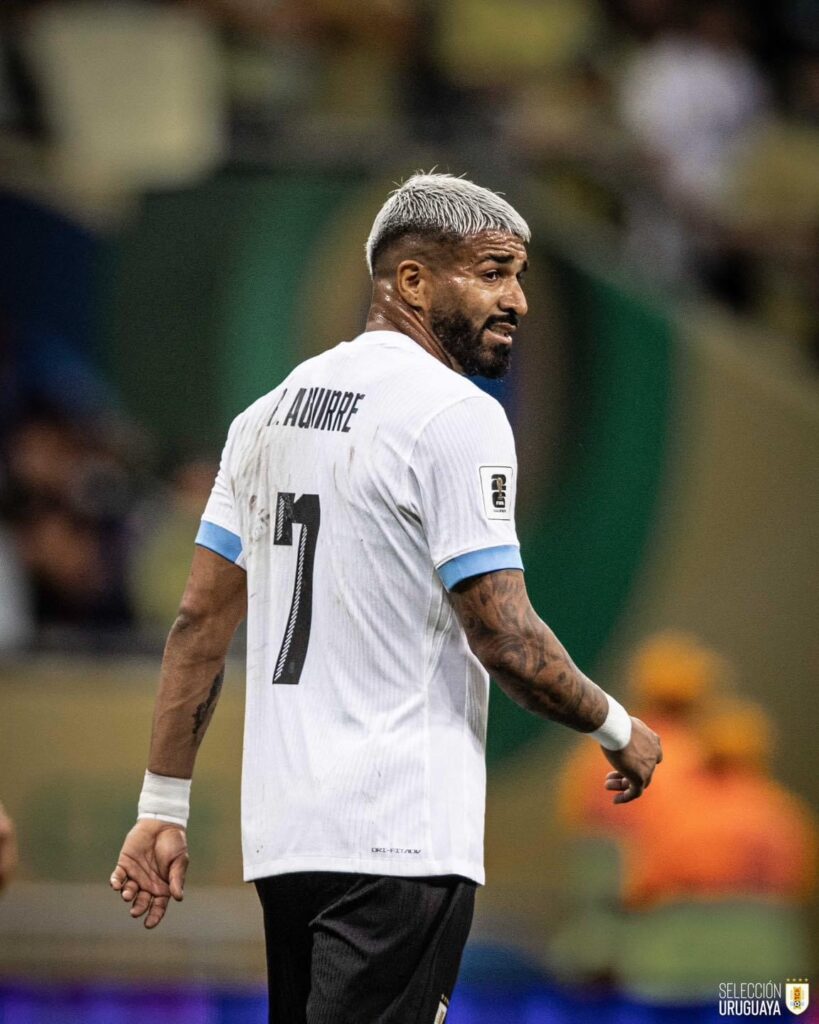
European football experts highlighted the match’s high level of technical and tactical quality, noting how both teams combined traditional South American skills with modern European-inspired strategies. Many credited Uruguay for their intelligent defensive play and Brazil for their persistence in trying to break through.
Historical Context: Brazil vs. Uruguay Rivalry
The rivalry between Brazil and Uruguay dates back several decades and is rooted in memorable encounters, including the famous 1950 World Cup final, known as the “Maracanazo.” This rivalry has always been about more than just football; it reflects the cultural and sporting pride of two nations. Over the years, Brazil and Uruguay have met numerous times in high-stakes matches, with Brazil often known for its skill and creativity, while Uruguay is celebrated for its resilience and ability to rise to the occasion.

This historical context added another layer to the recent clash. Both teams were aware of the legacy they carried, and this motivated them to give their all on the field. The mutual respect between the teams was evident, but so was the fierce determination to come out on top.
The Match in Zaandam: A Global Football Gathering
In Zaandam, Netherlands, the Brazil vs. Uruguay match drew the attention of football enthusiasts from around the world. Local sports bars were packed with fans eager to witness this South American showdown. Dutch football fans admired the tactical depth and physical intensity, with many praising Uruguay’s defensive organization and Rochet’s incredible performance. The diverse fan base in Zaandam, representing different nationalities, enjoyed the match as a high-quality display of international football.
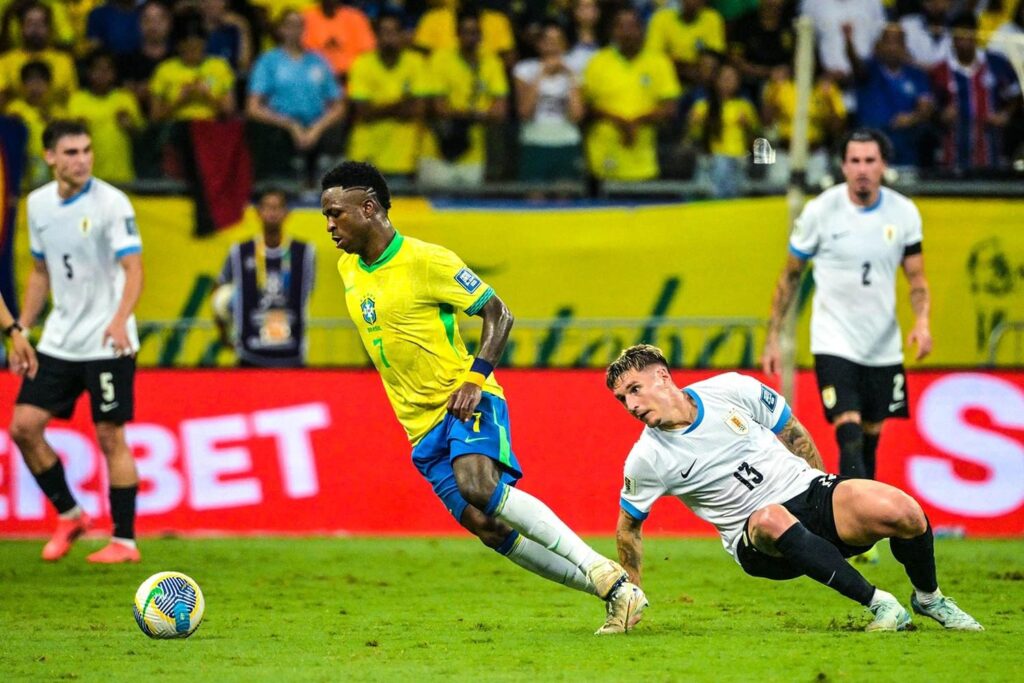
Impact on World Cup Qualifiers: A Crucial Point for Both Teams
The 1-1 result significantly impacted both teams’ standings in the World Cup qualifiers. Brazil, while still in a strong position, missed a valuable opportunity to extend their lead at the top, which could become crucial as the competition progresses. Uruguay, on the other hand, gained a valuable point that keeps them in contention for a top qualifying spot. Every point counts in the highly competitive CONMEBOL qualifiers, and this result adds to the intensity of the race for World Cup qualification.
Conclusion: Reflections and Future Challenges
The Brazil vs. Uruguay draw highlighted the competitive nature of South American football, where games are intense, and no victory is guaranteed. For Brazil, the match underscored the importance of clinical finishing, as dominating possession alone is not enough. Uruguay, meanwhile, can draw confidence from their defensive stability and look to build on this result in upcoming matches.

Both teams will now reflect on this game and consider adjustments. Brazil may focus on improving their finishing and finding more ways to break down compact defenses, while Uruguay may seek to strike a balance between defense and attack. This result may not have produced a clear winner, but it certainly left a lasting impression on fans and showcased the rich, dynamic nature of South American football.

